
A baldric is a belt worn over one shoulder that is typically used to carry a weapon or other implement such as a bugle or drum. The word may also refer to any belt in general, but this usage is poetic or archaic. In modern contexts, military drum majors usually wear a baldric.

Infantry is a specialization of military personnel who engage in warfare combat. Infantry generally consists of light infantry, irregular infantry, heavy infantry, mountain infantry, motorized infantry, mechanized infantry, airborne infantry, air assault infantry, and naval infantry. Other types of infantry, such as line infantry and mounted infantry, were once commonplace but fell out of favor in the 1800s with the invention of more accurate and powerful weapons.
The Roman legion, the largest military unit of the Roman army, was composed of Roman citizens serving as legionaries. During the Roman Republic the manipular legion comprised 4,200 infantry and 300 cavalry. After the Marian reforms in 107 BC, the legions were formed of 5,200 men and were restructured around 10 cohorts, the first cohort being double strength. This structure persisted throughout the Principate and middle Empire, before further changes in the fourth century resulted in new formations of around 1,000 men.
The pilum was a javelin commonly used by the Roman army in ancient times. It was generally about 2 m long overall, consisting of an iron shank about 7 mm (0.28 in) in diameter and 600 mm (24 in) long with a pyramidal head, attached to a wooden shaft by either a socket or a flat tang.

Military awards and decorations are distinctions given as a mark of honor for military heroism, meritorious or outstanding service or achievement. A decoration is often a medal consisting of a ribbon and a medallion.
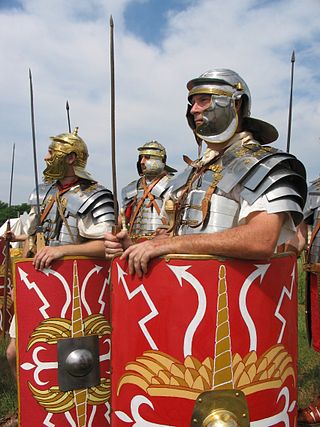
The Roman legionary was a citizen soldier of the Roman army. These soldiers would conquer and defend the territories of ancient Rome during the late Republic and Principate eras, alongside auxiliary and cavalry detachments. At its height, Roman Legionnaires were viewed as the foremost fighting force in the Roman world, with commentators such as Vegetius praising their fighting effectiveness centuries after the classical Roman legionary disappeared.

A medal or medallion is a small portable artistic object, a thin disc, normally of metal, carrying a design, usually on both sides. They typically have a commemorative purpose of some kind, and many are presented as awards. They may be intended to be worn, suspended from clothing or jewellery in some way, although this has not always been the case. They may be struck like a coin by dies or die-cast in a mould.

The Roman army served ancient Rome and the Roman people, enduring through the Roman Kingdom, the Roman Republic, and the Roman Empire, including the Western Roman Empire and the Eastern Roman Empire. It is thus a term that broadly spans approximately 2,206 years, during which the force underwent numerous permutations in size, composition, organisation, equipment and tactics, while conserving a core of lasting traditions.
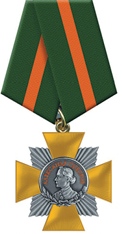
The Order of Suvorov is a military decoration of the Russian Federation named in honor of Russian Generalissimo Prince Alexander Suvorov (1729–1800).
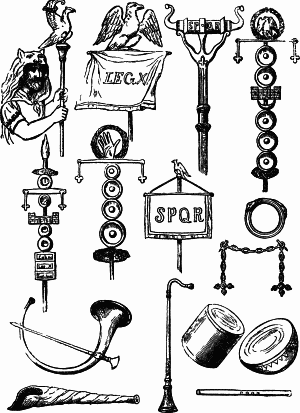
Roman military personal equipment was produced in large numbers to established patterns, and used in an established manner. These standard patterns and uses were called the res militaris or disciplina. Its regular practice during the Roman Republic and Roman Empire led to military excellence and victory. The equipment gave the Romans a very distinct advantage over their "barbarian" enemies, especially so in the case of armour. This does not mean that every Roman soldier had better equipment than the richer men among his opponents. Roman equipment was not of a better quality than that used by the majority of Rome's adversaries. Other historians and writers have stated that the Roman army's need for large quantities of "mass produced" equipment after the so-called "Marian Reforms" and subsequent civil wars led to a decline in the quality of Roman equipment compared to the earlier Republican era:
The production of these kinds of helmets of Italic tradition decreased in quality because of the demands of equipping huge armies, especially during civil wars...The bad quality of these helmets is recorded by the sources describing how sometimes they were covered by wicker protections, like those of Pompeius' soldiers during the siege of Dyrrachium in 48 BC, which were seriously damaged by the missiles of Caesar's slingers and archers.
It would appear that armour quality suffered at times when mass production methods were being used to meet the increased demand which was very high the reduced size cuirasses would also have been quicker and cheaper to produce, which may have been a deciding factor at times of financial crisis, or where large bodies of men were required to be mobilized at short notice, possibly reflected in the poor-quality, mass produced iron helmets of Imperial Italic type C, as found, for example, in the River Po at Cremona, associated with the Civil Wars of AD 69 AD; Russell Robinson, 1975, 67
Up until then, the quality of helmets had been fairly consistent and the bowls well decorated and finished. However, after the Marian Reforms, with their resultant influx of the poorest citizens into the army, there must inevitably have been a massive demand for cheaper equipment, a situation which can only have been exacerbated by the Civil Wars...
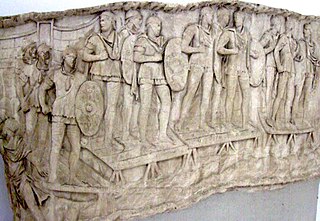
The auxilia were introduced as non-citizen troops attached to the citizen legions by Augustus after his reorganisation of the Imperial Roman army from 27 BC. By the 2nd century, the Auxilia contained the same number of infantry as the legions and, in addition, provided almost all of the Roman army's cavalry and more specialised troops. The auxilia thus represented three-fifths of Rome's regular land forces at that time. Like their legionary counterparts, auxiliary recruits were mostly volunteers, not conscripts.
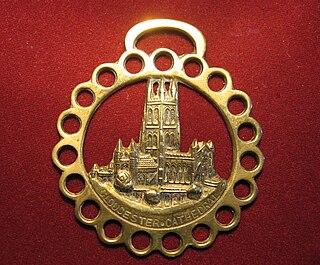
A horse brass is a brass plaque used for the decoration of horse harness gear, especially for shire and parade horses. They became especially popular in England from the mid-19th century until their general decline alongside the use of the draft horse, and remain collectors items today.
As with most other military forces the Roman military adopted an extensive list of decorations for military gallantry and likewise a range of punishments for military transgressions.

Guards units were elite units and formations in the Soviet Armed Forces that continue to exist in the Russian Armed Forces and other post-Soviet states. These units were awarded Guards status after distinguishing themselves in wartime service, and are considered to have elite status. The Guards designation originated during World War II, its name coming both from the Russian Imperial Guard, and the old Bolshevik Red Guards. Practical benefits of the status included double pay for ordinary soldiers and the designation often served as a morale-boosting source of unit pride.

The Eastern Roman army refers to the army of the eastern section of the Roman Empire, from the empire's definitive split in 395 AD to the army's reorganization by themes after the permanent loss of Syria, Palestine and Egypt to the Arabs in the 7th century during the Byzantine-Arab Wars. The East Roman army was the continuation of the Late Roman army of the 4th century, until it gradually transformed into what is now called the Byzantine army from the 7th century onwards.

The legions of the Roman Republic and Empire had a fairly standardised dress and armour, particularly from approximately the early to mid 1st century onward, when Lorica Segmentata was introduced. However the lack of unified production for the Roman army meant that there were still considerable differences in detail. Even the armour produced in state factories varied according to the province of origin.

The Etruscans, like the contemporary cultures of Ancient Greece and Ancient Rome, had a persistent military tradition. In addition to marking the rank and power of certain individuals in Etruscan culture, warfare was a considerable economic boon to Etruscan civilization. Like many ancient societies, the Etruscans conducted campaigns during the summer months of the year, raiding neighboring areas, attempting to gain territory, and combatting piracy. These activities were a means of acquiring valuable resources such as land, prestige goods and slaves. It was also likely that individuals taken in battle would be ransomed back to their families and clans at a high cost. Prisoners could also potentially be sacrificed on tombs to honor fallen leaders of Etruscan society, not unlike the sacrifices made by Achilles for Patroclus.

The Imperial Roman Army was the military land force of the Roman Empire from 27 BC to 476 AD, and the final incarnation in the long history of the Roman army. This period is sometimes split into the Principate and the Dominate (284–476) periods.
Awards and decorations of the Ukrainian Armed Forces are military decorations issued by the Ministry of Defence of Ukraine to soldiers who achieve a variety of qualifications, who have completed classroom training standards stipulated in their military occupational specialty and accomplishments while serving on active and reserve duty in the Armed Forces of Ukraine. Together with military badges, medals are a means to outwardly display the highlights of a service member's career. These badges are worn in order of precedence. Only badge of the highest degree worn.


















